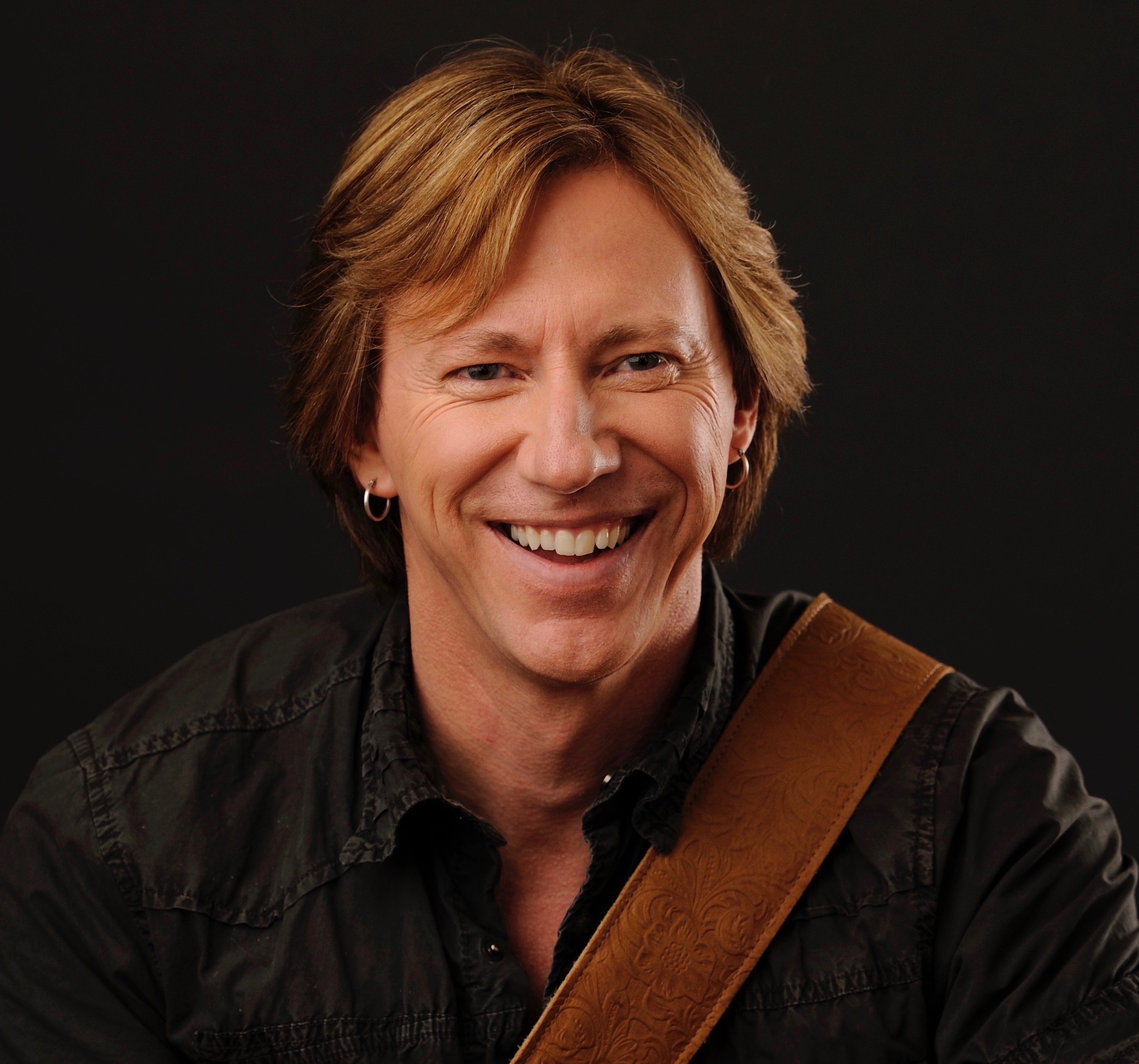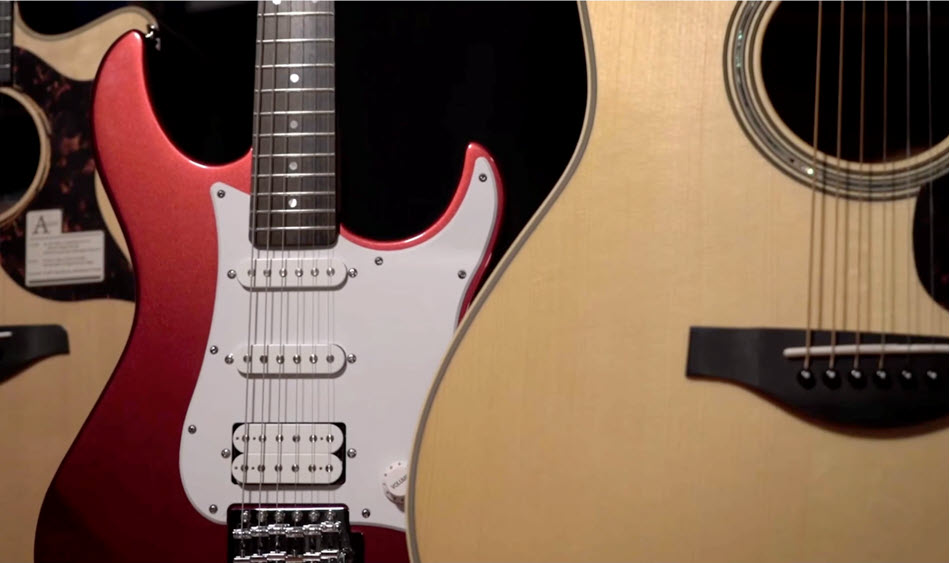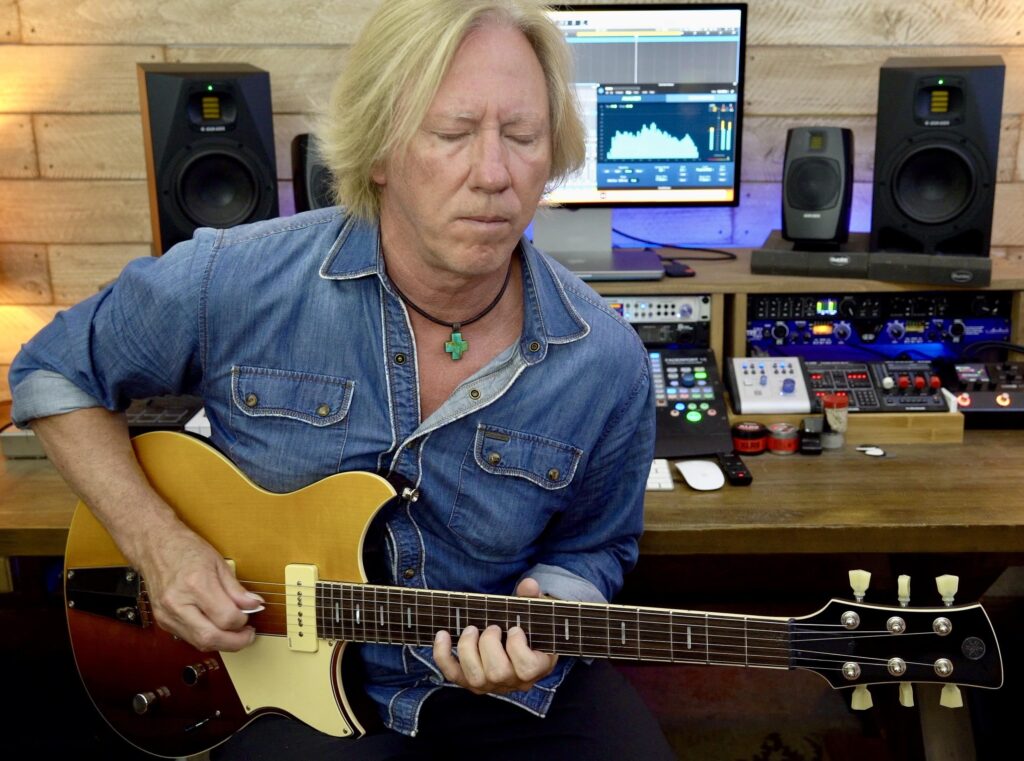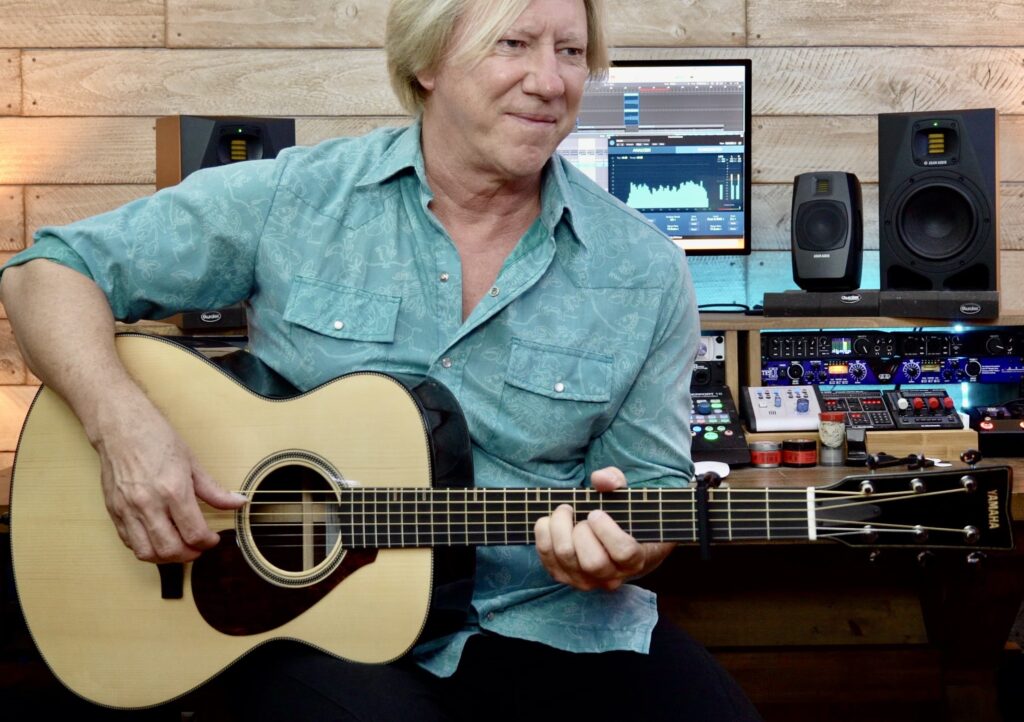How to Play Guitar and Sing at the Same Time
Make the connection between single notes and the chord structures that support them.
Something magical happens when you hear the sound of your voice vibrating freely with the body of an acoustic guitar. It’s where melody meets harmony and a deeper understanding of music can be felt and heard. In this article, I’d like to explore and expand on this concept.
Getting in Tune … and in Rhythm
I stress to all my students the importance of singing as you develop as a guitar player. This helps you make the connection between single notes and the chord structures that support them.
In the same way, vocalists can benefit from learning to play guitar. That’s because the resonant frequencies coming from a guitar can actually help fine-tune your vocal pitch. And when a voice is in tune with a supporting chord, there’s a direct connection; the sound becomes harmonious, strong and resolute. If the vocal pitch is out of tune with the guitar, it feels dissonant, disconnected and uncomfortable.
Let this resonance guide you. Trust me, you’ll feel the pitch as much as you’ll hear it.
Rhythm also plays a large part in the musical equation. Guitarists that accompany themselves vocally tend to have a better sense of phrasing, and vocalists that play guitar are better at finding new rhythmic pockets for their melodies.
Key Elements
If you’re just learning to sing while you play guitar and vice-versa, these are the key elements to focus on:
1. Song and Key Selection
Select a simple song you really like, and learn the guitar chords. If the song contains chords you don’t know, you may be able to transpose it to a key that contains chords within your repertoire. For example, if you take a song that contains these chords:
D (I) – A (V) – Bmi7 (VI) – G (IV)
and transpose it to the key of C, you’ll end up with this progression, which you may find easier to play:
C (I) – G (V) – Ami7 (VI) – F (IV)
Alternatively, you can always transpose with the use of a capo. Using the example above, you can bring the song back up to D by placing a capo at the 2nd fret. If you feel more comfortable playing the song in a key higher than D, simply continue moving the capo upwards.
Keep the chord structures simple at first, and in “open” form as much as possible, as this will allow you to stay in one position on the fretboard while you concentrate on the vocals.
As a bonus, transposing may put a song in a better key for your voice. If you have a hard time reaching certain notes with your voice, the song may be in a key that’s too high for you. Try lowering the key until it allows you to reach those tones. Conversely, if the song is in too low a key, it may affect your vocal pitching. In that case, you’ll need to transpose the progression into a higher key or use a capo to raise it up without changing the chord shapes.
There are times when I’ll change the key even if it’s not strictly required. If I’m singing long sets, for example, or have to give a performance in the morning (before my vocal cords have fully stretched), I lower the keys of most, if not all, songs a half-step. This helps me sustain the complete performance without straining my voice.
Over the years of developing my voice and repertoire, I’ve also found that I’ve sometimes been able to successfully raise the key of certain songs. Take time to find the right key for you.
2. Focus on the Lyrics
I suggest you have a copy of each song’s lyrics in front of you as you practice, and that you start with just the first line of the verse, no more. Memorize the line, and as you do so, analyze what beat the vocal phrase starts on. For example, it might start on the downbeat of one, the upbeat of two, or even before the bar. This is called a pick-up (not to be confused with a guitar pickup).
Designate an intro section to the song (i.e., the music before the first lyric), and play the chords in time, but slower than the original tempo. Sing the first line and listen carefully to its rhythmic placement and the pitch of the melody. Make sure the melodies correspond with the chord changes and that the lyric is sung at the correct pitch. (There’s a lot going on here, which is why I’m suggesting you learn one line at a time.)
Once you have a good handle on the opening line, add the second line of the song, then repeat the process until you have the whole song memorized and analyzed. You may find that phrasing varies from verse to verse; in fact, it may well shift completely on the chorus and bridge sections. Speaking of which …
3. Phrasing
Phrasing is the rhythmic delivery of the melodic and lyrical content — something that’s extremely important to the “feel” of the song. If you’re already reasonably proficient on guitar, you should have a good grasp of this concept.
It’s particularly important that you have a strong understanding of the rhythmic subdivision of the beats. A song in a 4/4 time signature with a “straight-eighth” feel, for example, will subdivide into twos and fours, whereas a 12/8 song with a shuffle feel will subdivide into threes.
You’ll be using your voice to sing pitch, lyrics and syncopated rhythms against this underlying pulse. That’s why having a good comprehension of the feel of a song will be crucial to your growth as both a singer and as a guitarist.
4. Hand and Voice Independence
As a guitarist, your two hands need to be able to operate independently, but you also need to establish independence between your voice and your hands.
Let’s break down what’s going on when we watch a guitarist perform:
1. The fretting hand is forming harmonic chord clusters that create a musical progression to support the melody being sung; and
2. The strumming hand is playing the rhythmic feel, following the bass notes of each chord change and creating dynamic expression through subtle volume changes. Great rhythm players will also add percussive rhythms, voice-leading and single notes to connect the chords.
This hand independence requires a lot of concentration, but will keep the song in time and at tempo. The beauty of solo performance is the ability to push and pull the tempo for extra musical expression.
Finally, the vocals deliver the lyrics, melody and rhythms over the guitar parts … and these rhythms may be very different from guitar rhythms. That’s why complete independence (not only between each hand, but with your voice as well) is the key to excellence in performance. Working slowly through a song will help you develop this.
5. Learn Some Inversions
An inversion is a chord that has a note other than the root in the bass. For example, here are the root position and “first” and “second” inversions of F major, C major and G major chords:
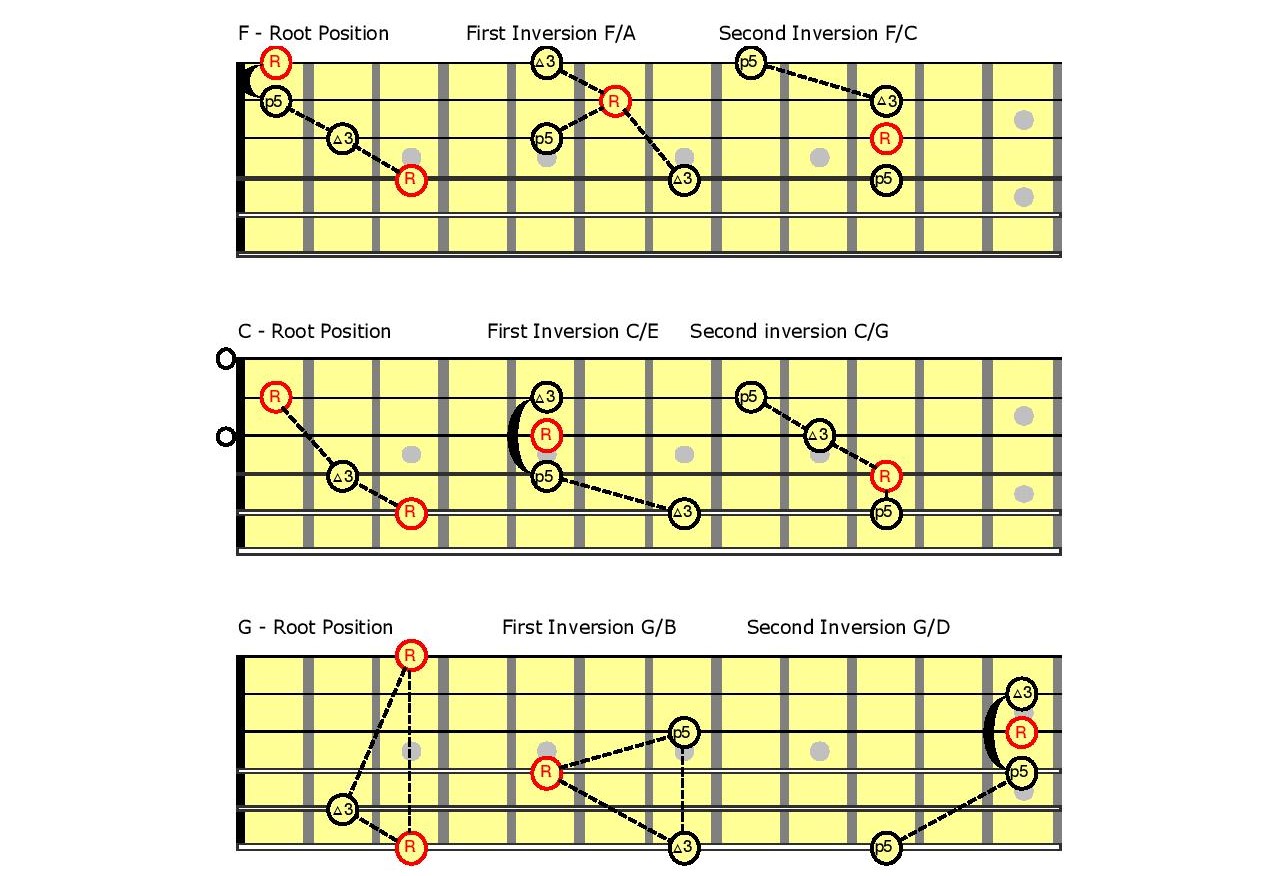
… and here’s what they sound like, both arpeggiated and played as chords:
As you can hear from these audio clips, inversions can change the sound of a chord considerably. They also allow you to connect to other chords in a smoother or more dramatic way. It pays to learn at least some basic chord inversions, as they can help you develop your melodic sensibilities and may even change how you approach singing a song.
6. Entertain the Audience
One of the cardinal rules of show business is: Never let ‘em see you sweat. It’s important to look like you’re having fun while you’re performing onstage … even if you’re not. Smiling at the crowd, making eye contact and engaging in polite conversation between songs can win over your audience even if you’re having a bad day and hitting a couple of clams every now and then. Professionalism means taking every aspect of your performance, demeanor and persona to its highest level.
The Video
This is my version of a classic rock song, captured at a live performance I did in Florida during a Yamaha Guitar clinic. I wanted to demonstrate how a Yamaha LS-TA TransAcoustic guitar and its onboard effects really shine when supporting the voice of a solo performer. I think it demonstrates how an artist can interpret and develop harmony, melody and rhythm into a unique version of a well-known song.
The Guitars
The guitar featured in this video is a Yamaha LS-TA TransAcoustic. Its solid rosewood back and sides, combined with the concert body Engelmann spruce top, produce a warm, rich tone, perfect for supporting the vocals of a singer-songwriter.
TransAcoustic guitars also feature dual onboard effects: a room/hall reverb and a lush dimensional chorus. Amazingly, these effects are heard even when the guitars are unplugged. I used a touch of the onboard hall reverb and a light sprinkle of chorus for this performance. The microphone captured the acoustic tone of the guitar (with onboard effects) and the “dry” un-effected vocals.
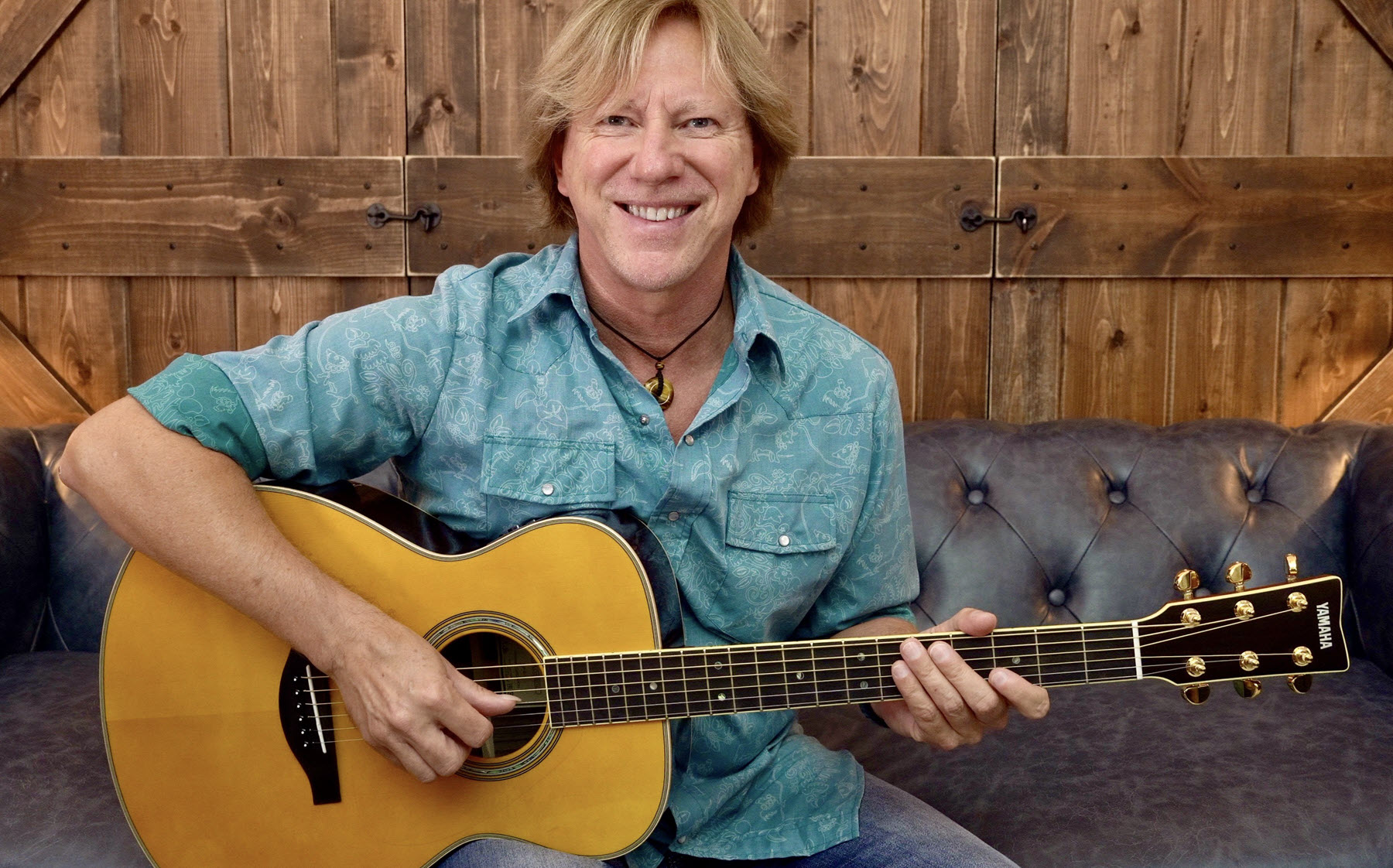
The Wrap-Up
There’s a big difference between playing a song and performing a song. I recommend these three phases of song development:
1. Learn the song structures, form and lyrics.
2. Rehearse the song repeatedly to perfect the sum of its parts.
3. Perform the song, adding all the emotional content, joy and feeling you can summon. Leave nothing to chance … and everything on the stage.
You’ll find that your whole musical world changes when you sing and accompany yourself on guitar at the same time. You gain a deeper experience and understanding of rhythm, harmony and melody — all crucial factors when it comes to honoring the song.
Photographs courtesy of the author.
Check out Robbie’s other postings.
Click here for more information about Yamaha TransAcoustic guitars.









